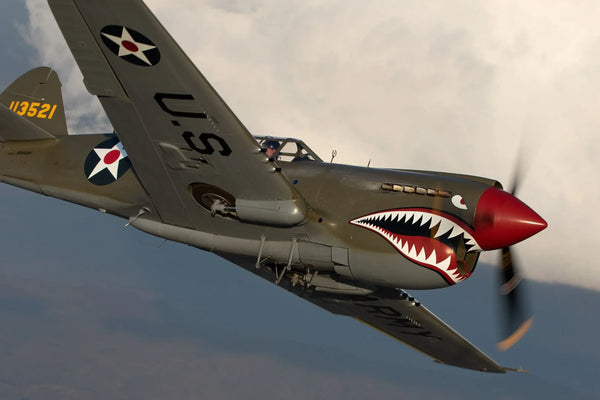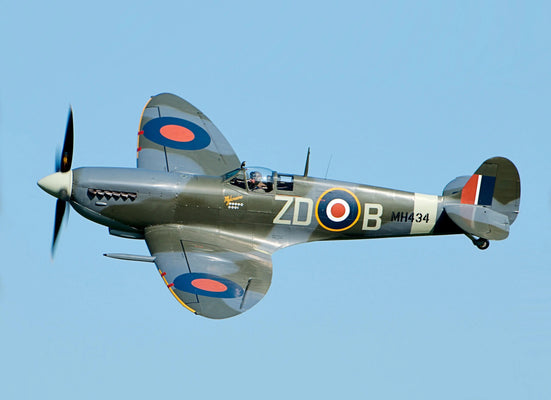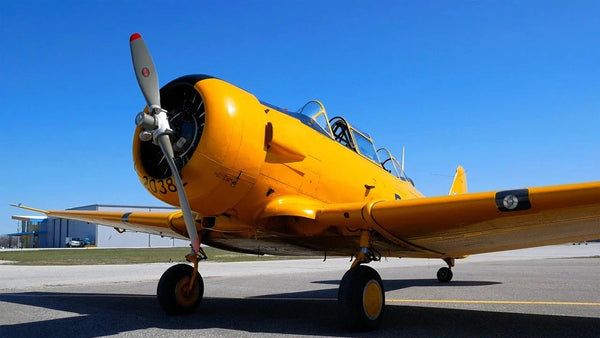Few aircraft in World War II captured the imagination of both pilots and aviation enthusiasts quite like the Lockheed P-38 Lightning. With its distinctive twin-boom design, powerful performance, and versatility in combat, the P-38 earned a legendary status. This blog post explores the P-38 from a pilot’s perspective, examining its handling, strengths, challenges, and the experience of commanding one of the most unique fighters of its era.
The First Impression: Design and Cockpit Layout
The Lockheed P-38 Lightning was a revolutionary aircraft for its time, known for its unique twin-boom design and a central pod that housed the cockpit and armament. This design choice was made by a team led by Hall Hibbard and Clarence "Kelly" Johnson to accommodate two powerful Allison V-1710 engines with turbosuperchargers and to provide a centralized location for the guns.

The P-38’s design was a testament to creativity and innovation. Instead of the traditional single-engine fighter configuration, the twin-boom setup supported the engines and the tail assembly, with the pilot sitting in a central pod. This layout proved highly effective, as the twin counter-rotating propellers eliminated the torque effect common in single-engine fighters, making the P-38 exceptionally stable on takeoff and in flight. The nose-mounted armament, typically four .50-caliber machine guns and a 20mm cannon, was another key feature. This allowed for a concentrated and effective stream of fire at a greater range than wing-mounted guns, which required convergence at a specific distance. The P-38 also featured tricycle landing gear with a nosewheel, which improved ground handling and pilot visibility during taxiing.

The P-38 cockpit was relatively spacious compared to many other fighters of the era. It used a yoke rather than a stick and was arranged to help the pilot manage the complex, twin-engine systems. The instrument panel provided essential flight and engine information, including gauges for manifold pressure, oil pressure, and coolant temperature.
Takeoff and Climb Performance
The P-38 was known for its exceptional takeoff and climb performance, a significant advantage for a high-altitude interceptor and long-range escort fighter. Its twin engines and tricycle landing gear contributed to an efficient takeoff. The powerful Allison V-1710 engines, producing around 1,475 hp each in later models, provided the thrust needed to get the aircraft airborne quickly, even when loaded with fuel and ordnance. The takeoff run for a P-38E could be as short as 380 meters (around 1,250 feet), allowing it to operate from shorter runways.
The P-38's climb performance was one of its most significant strengths. The combination of its powerful engines and turbosuperchargers allowed it to maintain performance at high altitudes, where other fighters often struggled. Later models could achieve a maximum climb rate of up to 4,750 feet per minute, one of the highest of any propeller-driven fighter at the time. This allowed the P-38 to quickly gain altitude to engage enemy aircraft from a position of advantage.
Handling in Flight
The P-38 was generally a very stable and forgiving aircraft to fly. Its counter-rotating propellers eliminated the torque effect, making it a steady gun platform. In combat, it excelled at "boom-and-zoom" tactics, using its superior speed and climb rate to make high-speed passes and then climb away to a safe altitude.
However, the P-38 also had some unique challenges. The most notorious was compressibility, a dangerous phenomenon that occurred during high-speed dives. At around Mach 0.68, shock waves would form on the wings, causing the pilot to lose elevator control and the aircraft to pitch nose-down uncontrollably. This issue led to the loss of many aircraft and pilots. The problem was eventually mitigated by the addition of dive recovery flaps on later models. Additionally, early P-38 versions had a relatively slow roll rate, putting them at a disadvantage in dogfights against more agile German fighters. Lockheed later addressed this with hydraulically boosted ailerons.
Combat Effectiveness
The P-38's combat effectiveness varied depending on the theater. It truly shone in the Pacific, where its long range was essential for missions over vast distances. The security of a second engine was also a major advantage over the open ocean. The P-38 was the aircraft of choice for America's two highest-scoring aces, Richard Bong and Thomas McGuire, and is credited with shooting down more Japanese aircraft than any other USAAF fighter.
In the European Theater, the P-38's performance was more mixed. Early models struggled with freezing cockpit heating systems and engine problems in the harsh, cold climates. However, its versatility made it invaluable. It was the only Allied fighter with the range to escort bombers on deep raids into Germany before the P-51 Mustang became widely available. The P-38 also excelled in the reconnaissance role, with specialized variants taking an estimated 90% of all American aerial photographs of Europe.
Voices from the Cockpit
Pilots who flew the P-38 often had a mix of feelings about it, from admiration for its power to awareness of its quirks. German pilots gave it the name "der Gabelschwanz-Teufel" (the "fork-tailed devil"), a testament to the fear and respect it commanded.

P-38 pilots in Europe often complained about the cold, as the cockpit was not heated by an engine in front, making high-altitude missions miserable. Despite this, top aces like Richard Bong and Thomas McGuire appreciated its speed, climb rate, and concentrated firepower. Bong was known for getting extremely close to his targets, a tactic made highly effective by the P-38's nose-mounted guns.
Challenges Pilots Faced
Beyond the issues with compressibility, engine failure was another challenge. A sudden engine failure on the ground could be catastrophic, as the P-38's design would cause an uncontrollable roll toward the running engine. Pilots had to be trained to immediately reduce power on the good engine and feather the prop on the failed one to maintain control. Early Allison V-1710 engines also had issues with cooling and synchronization at high altitudes in cold climates.

The cockpit’s complexity was also a challenge. As one pilot noted, having to adjust multiple switches for fuel tanks, RPM, and manifold pressure in a split second during combat was a severe disadvantage.
Legacy Through a Pilot’s Eyes
The P-38’s legacy is defined by its ability to inspire a range of feelings in its pilots. It was a demanding but ultimately rewarding machine. The courage of test pilots who solved the compressibility issue is a key part of its story. One of the most famous quotes about the aircraft comes from Lockheed test pilot Colonel Ben Kelsey, who said the P-38 "would fly like hell, fight like a wasp upstairs, and land like a butterfly". This poetic description captures the dual nature of the aircraft: a powerful, high-performance fighter that was also surprisingly gentle and stable when handled correctly.
If you're captivated by the P-38's unique design and legendary history, bring a piece of that legacy to your home or office. Order your own P-38 wooden model today and own a piece of aviation history!




